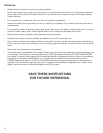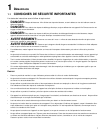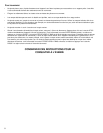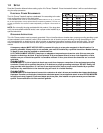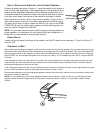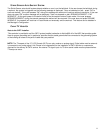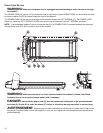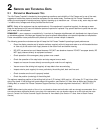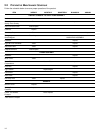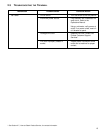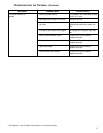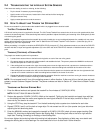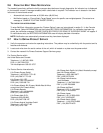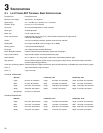
2.4 TROUBLESHOOTING THE LIFEPULSE SYSTEM SENSORS
If the heart rate reading is erratic or missing, do the following:
• Dry the hands if necessary to prevent slipping.
• Apply hands to all four sensors, located at the front and back of the hand grips.
• Grasp the sensors firmly.
• Apply constant pressure around the sensors.
2.5 HOW TO ADJUST AND TENSION THE STRIDING BELT
Do not move treadmill or place hands under treadmill while it is plugged into an electrical outlet!
THE
BELT TENSIONING BOLTS
A 5/16-inch hex key wrench is required for this task. The Life Fitness Treadmill has access holes in the rear roller guards which allow
access to the tensioning bolts. These tensioning bolts make it possible to adjust the tracking and centering of the striding belt (A) with-
out removing the guards.
NOTE: It is extremely important that the treadmill be correctly leveled prior to any tracking adjustments. An unstable unit may cause
striding belt misalignment. See the topic titled "How To Stabilize the Life Fitness Treadmill" in the Section 1.3, titled Set Up, prior to
attempting any rear roller adjustments.
Before proceeding, it is helpful to visualize the REAR ROLLER (B) pivot point (C). Each adjustment made to one side of the ROLLER
must be met with an equal and opposite adjustment (D) to the other side of the ROLLER to maintain an ideal belt tension at the pivot
point.
T
RACKING (CENTERING) A STRIDING BELT
Two people are needed to perform this procedure.
1. Locate the two access holes to the belt tensioning bolts on each of the rear roller guards.
2. One person stands on the side rails of the treadmill and straddles the belt. This person presses the MANUAL workout and
sets the belt speed to 2.5 MPH (4.0 KPH).
3. If the striding belt has moved to the right, the second person turns the right tension bolt a quarter-turn clockwise and then
turns the left tension bolt a quarter-turn counter-clockwise to make the striding belt track back to the center of the roller.
If the striding belt has moved to the left, turn the left tension bolt a quarter-turn clockwise and then turn the right tension bolt
a quarter-turn counter-clockwise to make the striding belt track back to the center of the roller.
4. Repeat the adjustments until the striding belt appears centered. Allow the machine to continue running for several minutes at
4.0 MPH. (6.4 KPH) to observe if tracking remains stabilized.
NOTE: Do not exceed one full turn of the adjusting screws in either direction. If after one full turn the belt does not track
properly, contact Customer Support Services. The phone numbers are listed in Section 2.7, titled How to Obtain Product
Service.
TENSIONING AN EXISTING STRIDING BELT
1 Enter the Manual workout and operate the treadmill for five minutes at 5.0 MPH (8.0 KPH).
NOTE: DO NOT RUN OR WALK ON BELT.
2 Reduce the speed to 2.0 MPH (3.2 KPH). Walk on the treadmill. Tightly grip the handrails and apply force with feet
on the striding belt near the motor cover against the moving belt direction. If the belt slips, continue to Step 3. If it
does not slip, the tension is correct.
3 Using the STOP key, stop the treadmill. Turn the belt tensioning bolts a quarter-turn clockwise for each side.
4 Repeat STEPS 2 and 3 until the belt no longer slips. Do not exceed one full turn (four quarter turns) per side when
adjusting the belt tensioning bolts.
5 Enter the MANUAL workout and operate the treadmill at 2.0 MPH (3.2 KPH) check to insure proper tracking (See
Section 2.5, titled How to Adjust and Tension the Striding Belt). If the striding belt drifts to the left or right see the
topic titled Tracking (Centering) an Existing or New Striding Belt..
Do not over-tighten the tensioning bolts while making belt adjustments. Over-tightening of bolts may over stretch and
damage the striding belt or roller bearings. Do not exceed one full turn of either bolt in either direction.
18



